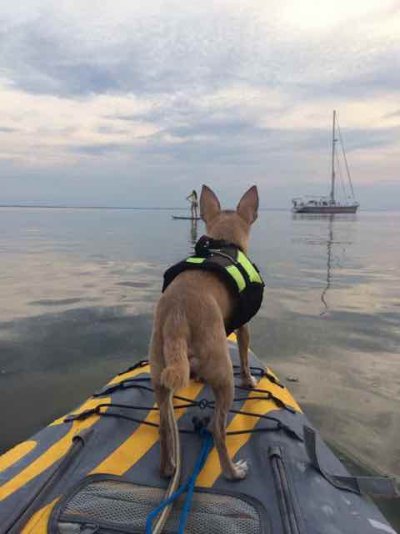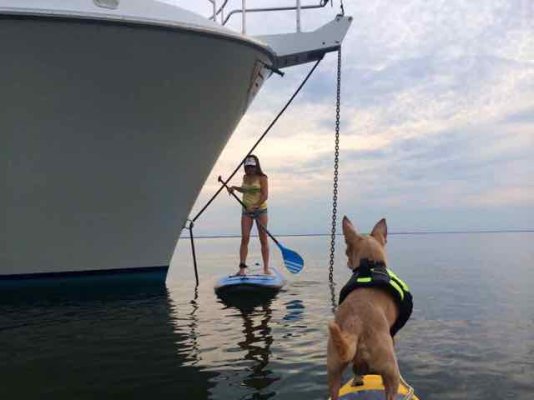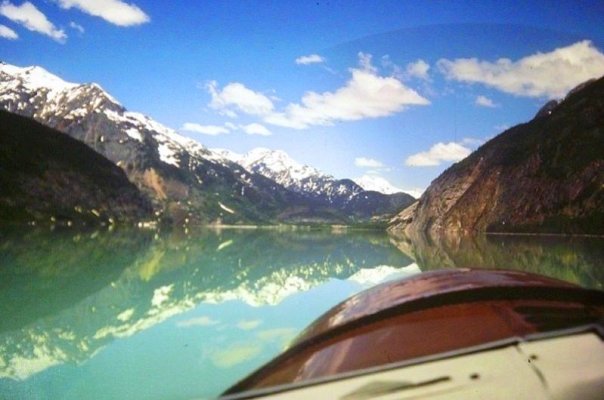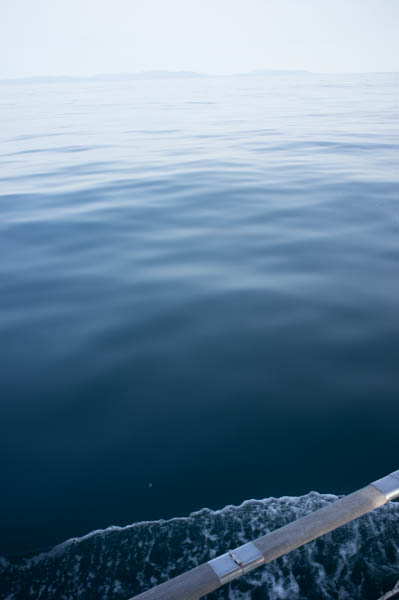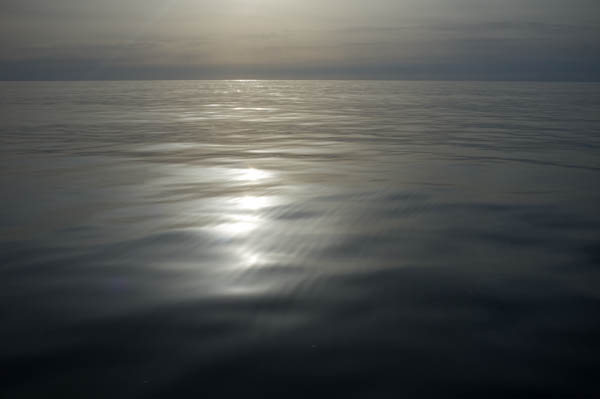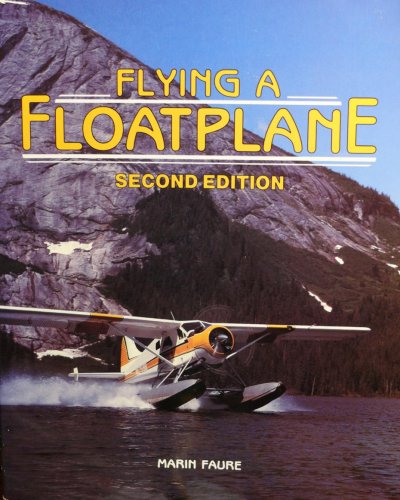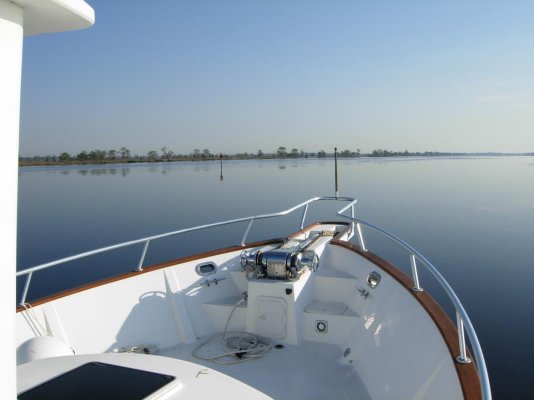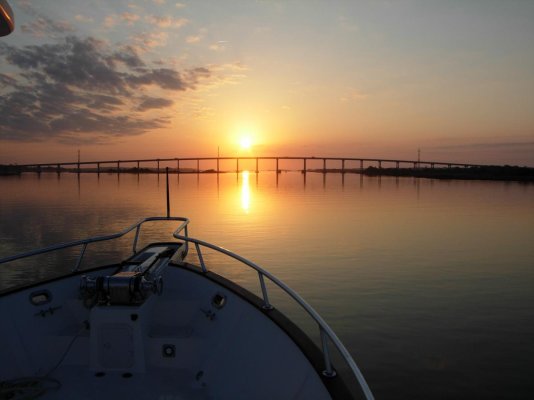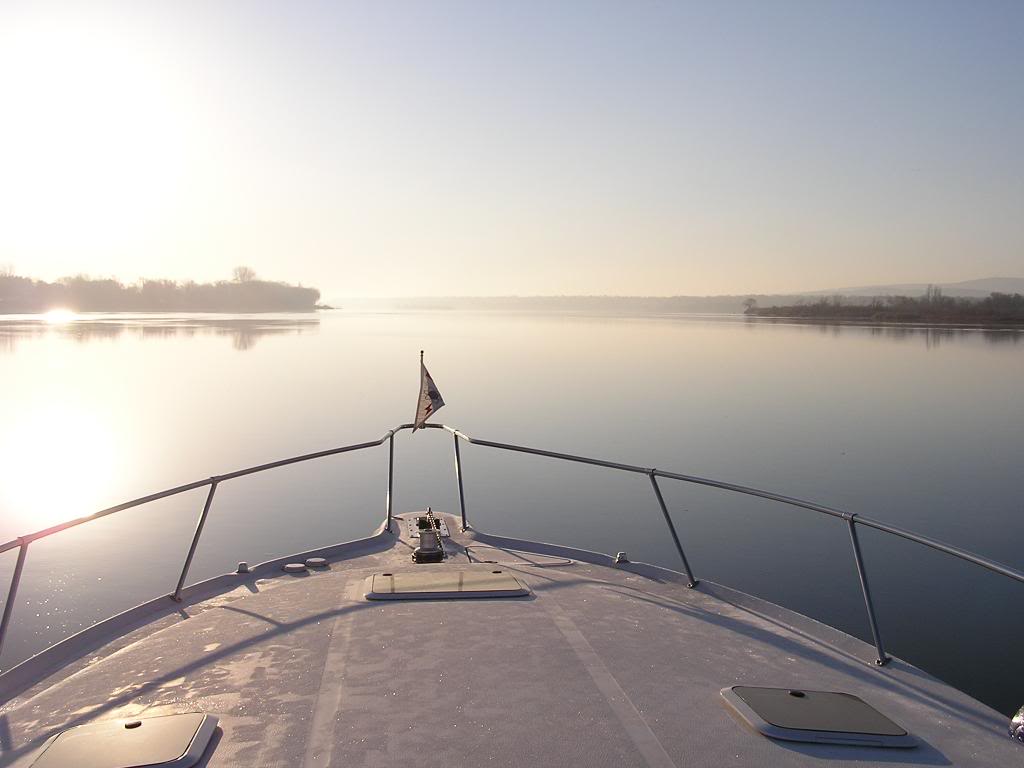You are using an out of date browser. It may not display this or other websites correctly.
You should upgrade or use an alternative browser.
You should upgrade or use an alternative browser.
Glass Days
- Thread starter markpierce
- Start date
The friendliest place on the web for anyone who enjoys boating.
If you have answers, please help by responding to the unanswered posts.
If you have answers, please help by responding to the unanswered posts.
It would take me far to long to explain why glassy water is so dangerous to a seaplane pilot. Not once you're on it but landing on it and taking off from it. Landing is the far more potentially dangerous situation, but it can get a pilot in trouble when taking off with a heavy load.
Marin,
Is the danger due to not being able see where the sky ends and water begins?
No, it's got nothing to do with that. I took the photo that accompanied my earlier post while I was on final approach to the lake. Based on what you see in the photo, how high was I off the water when I snapped the photo? Twenty-five feet, fifty feet, seventy five feet, or a hundred feet?
PS-- Saw I had the photo on this computer so here it is again.
Attachments
Last edited:
Nomad Willy
Guru
Comanche,
I'm more interested in your boat than the glass. You have a very interesting boat and a few pics on "interesting boats" would be very welcome to this trawler owner.
I'm more interested in your boat than the glass. You have a very interesting boat and a few pics on "interesting boats" would be very welcome to this trawler owner.
Marin,
It sounds like a depth perception issue. Could you direct me to a site or source where I might learn more?
Thanks,
Rob
Depth perception plays a role but it's a more complex issue than that.
With regard to information about the topic, are several books on the subject of which is my own book, "Flying A Floatplane" which came out in 1985 and went through three editions before its print run ended in the mid-2000s. One can easlily find used copies on the internet. It is one of the most complete books on the subject at some 260 or 70 pages, and covers the glassy water challenge very well.
I wrote it assuming the reader was already a pilot, so it's not a book on how to fly. It's a book on what a licensed pilot needs to know to fly a floatplane.
This is the cover of the second edition, which of the three is my favorite even though the third edition has additional information about flying turbine floatplanes and floatplane maintenance.
Glassy water can be a very tough situation to deal with and it has been responsible for a fair number of accidents and fatalities.
Attachments
Last edited:
Datenight
Guru
Thanks Marin.
I am not a pilot but have many friends and a family member in the business. I will look for a copy of the second edition if only to learn more about "glass" take off and landing.
Rob
I am not a pilot but have many friends and a family member in the business. I will look for a copy of the second edition if only to learn more about "glass" take off and landing.
Rob
Thanks Marin.
I am not a pilot but have many friends and a family member in the business. I will look for a copy of the second edition if only to learn more about "glass" take off and landing.
Rob
I'll save you the hassle of finding and buying a book, but first give me your answer to the question I posed in post #62: how high do you think my plane was off the surface of the lake when I took the photo during landing? 25, 50, 75, or 100 feet off the water?
(The moderators can move this to the Off Topic folder if they'd like to. If Rob answers the question I'll only have one post after that on this.)
dimer2
Moderator Emeritus
I'll take a guess of 100 feet. The dash is still angled and any lower you probably should have one hand on the wheel and one either trimming or on the throttle not taking pictures. Looking just at the outside view in the photo, you could just as easily be already landed. Good pic as it proves your point.
Heron
Guru
- Joined
- Nov 5, 2014
- Messages
- 1,304
- Location
- USA
- Vessel Name
- Heron (2)
- Vessel Make
- '88 Cape Dory 28 Flybridge #115
Webcam shot of my Harbor this morning....
I'm behind the tree on the left next to the Schooner. So much for my free security cam LOL...
A few interesting boats came into Washington NC over the weekend. To the left of the center tree, a Great Harbor 37 on the way up from Florida, and a Valor 44 on a delivery trip to the Chesapeake from the Gulf.

I'm behind the tree on the left next to the Schooner. So much for my free security cam LOL...
A few interesting boats came into Washington NC over the weekend. To the left of the center tree, a Great Harbor 37 on the way up from Florida, and a Valor 44 on a delivery trip to the Chesapeake from the Gulf.

windmill29130
Guru
- Joined
- Jan 22, 2011
- Messages
- 716
- Vessel Name
- JAZ
- Vessel Make
- Ta Chaio/CT35
I gotta get a hammock!
Gulf Comanche
Guru
- Joined
- Dec 16, 2007
- Messages
- 1,045
- Location
- U.S.A.
- Vessel Name
- Old School
- Vessel Make
- 38' Trawler custom built by Hike Metal Products
Eric:
I posted some pics in the "boat pics" thread.
Mike
I posted some pics in the "boat pics" thread.
Mike
any lower you probably should have one hand on the wheel and one either trimming or on the throttle not taking pictures.
Actually, I've taken photos during all phases of flying an approach including the last moments before touchdown. Out of curiosity I timed how long it takes years ago when I was using a film SLR. Using the "one-one thousand..." method it takes four seconds or less to lift the camera, frame the shot, push the button and lower the camera.
Probably not something one would do while landing an FA-18 on the deck of a carrier although I'm sure there are pilots who've done it. But landing a de Havilland Beaver on a lake in stable conditions is a very different proposition.
And, like docking a boat, there are different levels of comfort. I've got a lot of time in Beavers and it's an environment I'm very much at home in. I know that the plane is not going to do anything sudden or drastic if I take my hand off the power lever for four seconds to take a picture.
- Joined
- Apr 15, 2008
- Messages
- 13,731
- Location
- California Delta
- Vessel Name
- FlyWright
- Vessel Make
- 1977 Marshall Californian 34 LRC
It's always hard to tell altitude of an airplane from a photo taken from inside the plane. A live look out the real window is worth a thousand photos.
But it is difficult to tell the height above water, especially when there's no nearby shoreline of land reference. No doubt trying to land on a dead flat reflective surface would provide its own set of challenges, not the least of which is...for lack of a better term...hull friction. (Is it obvious I'm not a water plane jockey?)
But it is difficult to tell the height above water, especially when there's no nearby shoreline of land reference. No doubt trying to land on a dead flat reflective surface would provide its own set of challenges, not the least of which is...for lack of a better term...hull friction. (Is it obvious I'm not a water plane jockey?)
markpierce
Master and Commander
- Joined
- Sep 25, 2010
- Messages
- 12,557
- Location
- USA
- Vessel Name
- Carquinez Coot
- Vessel Make
- penultimate Seahorse Marine Coot hull #6
Better to land in glass seas or on four-foot-high waves? What is the maximum wave height considered safe for the typical float plane?
Tracy Arm, Alaska:

Tracy Arm, Alaska:
Last edited:
Better to land in glass seas or on four-foot-high waves? What is the maximum wave height considered safe for the typical float plane?
They can both destroy your plane and kill you. And no floatplane pilot would attempt a landing in four foot waves unless it was an emergency and there was no other choice. And he or she would do it knowing the plane would most likely come apart on touchdown.
(Big and consistently spaced swells, I should add, are another matter and there is a technique for landing and taking off in them that has a very good chance of working.)
The maximum wave height a floatplane can handle is dependent upon the size of the plane. A de Havilland Otter can handle rougher water than a Piper Super Cub. Floatplanes, unlike wheel planes and skiplanes, don't have shock absorbers. The float system is rigid to the airframe. Touchdown speed varies with the type of plane of course, but they can run from 40 to 60 mph. Imagine running across the water in a ski-boat at that speed and that's what you're dealing with.
So it's not just the size of the waves but the distance between them and their steepness that are critical factors in deciding whether to attempt a landing on rough water.
The bottom line is that a floatplane is far more susceptible to damage on rough water than one might expect just looking at one. The floats that look so large and heavy duty to the eye are actually quite fragile.
I landed a Beaver once in the Strait of Juan de Fuca to deliver a part to a boat and while the water looked pretty decent to me, when I got on it I found there was a low swell pattern that had not been apparent from the air. It's the only time I've ever thought an airplane was actually going to come apart under me. Once down and stopped I realized what the water was doing and so could plan my takeoff run and technique to minimize the pounding to a fair degree.
To a boater in a typical recreational cruiser like most of us here have, the water I landed in would probably have been considered fairly calm. There were no whitecaps, just fairly small wind ripples, probably less than a foot. This I could see. The gentle rolling swell pattern I couldn't.
Flying boats, by the way, can handle rougher water than a floatplane.
Last edited:
Flying boats, by the way, can handle rougher water than a floatplane.
I've been enjoying this thread and wondered when this point would be
posted.

Ted
I've been enjoying this thread and wondered when this point would be
posted.
Ted
This is really getting close to Off Topic, but FWIW and for those who don't know and might be interested......
The "family" name for all these aircraft is "seaplane." Seaplanes are divided into two categories: floatplanes and flying boats. Each of these categories is divided into two types, "straight" and "amphibious."
The rating to fly these planes is called "Sea." This rating has two qualifiers, Single Engine and Multi-Engine. My rating is Single Engine Sea. This permits me to fly single engine floatplanes and flying boats, assuming the required checkouts.
"Straight" flying boats include some pretty big ones, like the Boeing 314 Clipper, various Sikorsky models, the Martin Mars, and so on
"Amphibious" flying boats include small ones, like the single-engine Seabee, Lake, and Teal, and larger multi-engine planes like the Gumman Widgeon, Goose, Mallard, and Albatross and the famous Consolidated PBY Catalina, which was also made as a straight flying boat.
The PBY in particular was used in some very rough water in the Pacific theatre in the open ocean during WWII rescuing downed pilots and survivors from torpedoed ships. The Albatross was used by the Air Forcer and USCG for rescue work as well, and their pilots worked them in open water conditions that were extremely challenging to say the least.
Last edited:
Similar threads
- Replies
- 40
- Views
- 5K
- Replies
- 80
- Views
- 8K

